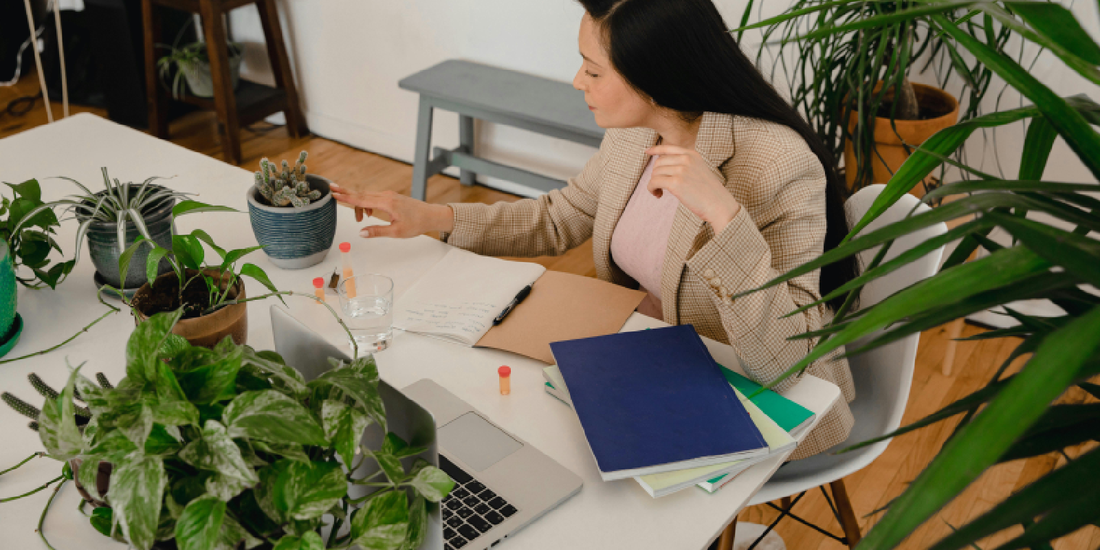
Troubleshooting Common Shelf Plant Issues
Share
Indoor plant shelves bring style and vitality into homes, transforming compact apartments into thriving green sanctuaries. The amoyls VerdantGlow S-Shaped 8-Tier Plant Shelf with Grow Lights is designed to make plant care easier by combining functional grow lighting with a modern space-saving structure. However, even with the perfect setup, issues can still arise. Leaves may yellow, growth may stall, soil might develop mold, or pests may unexpectedly appear. These problems are common among indoor gardeners, but they do not mean your plants are doomed.
This comprehensive guide explores the most frequent issues that occur with plants on multi-tiered shelves and explains not just the symptoms, but also the underlying causes and step-by-step solutions. By following these troubleshooting methods, you can help your indoor garden flourish on the VerdantGlow shelf year-round.
1. Yellowing Leaves
Why it happens
Yellow leaves are one of the first warning signs that something is out of balance. While the cause may vary, the underlying message is stress.
- Overwatering: Roots suffocate in soggy soil, losing access to oxygen. Without oxygen, they cannot deliver nutrients effectively.
- Underwatering: The opposite problem, where plants are starved of hydration, leading to tissue collapse.
- Nutrient Deficiencies: Lack of nitrogen, magnesium, or iron often causes chlorosis, where leaves fade to pale yellow.
- Light Problems: Both insufficient light and overexposure can stress leaf tissue.
How to fix it
- Stick to a consistent watering schedule and always check soil moisture before watering. The top inch should feel slightly dry, not soggy.
- Use a moisture meter for accuracy if you are unsure.
- Fertilize monthly with a balanced NPK liquid fertilizer, diluted to half strength for indoor use.
- Position the VerdantGlow grow lights 6–12 inches above the plant canopy and provide 8–12 hours of consistent light depending on plant type.
2. Drooping or Wilting Plants
Why it happens
Drooping leaves signal either stress or immediate need for adjustment.
- Inconsistent Watering: Skipping and then overcompensating with heavy watering causes roots to weaken.
- Heat Stress: Shelves too close to grow lights may expose plants to excess heat.
- Root Bound: Containers that are too small restrict root expansion.
How to fix it
- Adopt a regular watering schedule. Most indoor plants prefer even moisture without extremes.
- Adjust light placement on the VerdantGlow shelf so plants are not overheating.
- Repot root-bound plants into containers that are 1–2 inches larger in diameter than the old pot.
3. Mold and Mildew on Soil
Why it happens
Indoor spaces often trap humidity, and multi-tiered plant shelves may have pockets of still air.
- Overwatering creates wet soil conditions ideal for fungus.
- Poor Airflow allows spores to settle and spread.
- Dead Organic Material left on the soil decomposes and fuels mold growth.
How to fix it
- Reduce watering frequency and allow the topsoil to dry between watering.
- Increase airflow by using a small oscillating fan directed at the shelf.
- Remove decaying leaves, and top the soil with horticultural sand or perlite to discourage fungal colonies.
4. Leggy or Stretched Growth
Why it happens
Plants become “leggy” when they are chasing light.
- Low Light Intensity: Weak lighting makes plants elongate in search of energy.
- Unbalanced Spectrum: Without full-spectrum grow lights, plants cannot photosynthesize efficiently.
How to fix it
- Place plants closer to the VerdantGlow grow lights without exceeding the safe distance.
- Ensure lights remain on for 10–12 hours a day, using a timer for consistency.
- Rotate pots weekly so all sides of the plant receive balanced exposure.
5. Leaf Burn or Scorching
Why it happens
Crispy or brown edges often indicate light or chemical stress.
- Lights Too Close: Leaves may literally scorch.
- Over-Fertilization: Fertilizer salts can burn delicate roots, leading to leaf edge damage.
How to fix it
- Maintain a safe buffer between grow lights and foliage, ideally 6–12 inches.
- Flush soil occasionally with clean water to remove built-up salts.
- Always dilute fertilizer more than outdoor recommendations—indoor plants require gentler care.
6. Pests on Indoor Plants
Why it happens
Even with indoor setups, pests manage to sneak in.
- Aphids, Spider Mites, Fungus Gnats: The most common culprits indoors.
- Overwatered Soil: Attracts fungus gnats.
- New Plant Introductions: Often carry hidden infestations.
How to fix it
- Place yellow sticky traps on the shelf to capture gnats.
- Wipe leaves with neem oil or insecticidal soap solution weekly.
- Quarantine new plants for at least 14 days before adding them to your VerdantGlow shelf.
7. Uneven Growth Across Tiers
Why it happens
Multi-tier shelves may shade lower levels.
- Upper Shelves Block Light: Plants underneath struggle.
- Dripping Water: Moisture from upper pots can stress lower-tier plants.
How to fix it
- Rotate plants across different tiers weekly.
- Group plants by light needs: succulents on higher tiers, shade-loving varieties below.
- Use saucers under pots to catch excess water.
8. Root Rot
Why it happens
Root rot is one of the deadliest conditions for indoor plants.
- Waterlogged Soil suffocates roots.
- Poor Drainage causes standing water at the base of pots.
How to fix it
- Repot immediately with fresh, well-draining soil.
- Trim damaged roots and sterilize tools.
- Place pots on risers or mesh trays on the VerdantGlow shelf for improved airflow and drainage.
9. Stunted Growth
Why it happens
Plants that stop growing usually lack one or more essentials.
- Nutrient Deficiency: Soil becomes exhausted over time.
- Inconsistent Lighting: Interrupts photosynthesis cycles.
- Temperature Swings: Drafts from windows or heaters stress plants.
How to fix it
- Replace potting soil annually or refresh with compost.
- Keep light hours consistent with timers.
- Position shelves away from vents, drafty windows, and direct air conditioning.
10. Overcrowding and Airflow Issues
Why it happens
When indoor gardeners get enthusiastic, they pack too many plants together.
- Crowded Shelves: Limit air movement and light penetration.
- Dense Canopies: Provide breeding grounds for pests and disease.
How to fix it
- Space plants at least a few inches apart.
- Add small clip-on fans for circulation across the 8 tiers.
- Prune foliage regularly to keep plants manageable.
11. Light Management for Shelf Plants
Even with built-in grow lights, light positioning and timing are critical.
Best practices
- Maintain 8–12 hours of light daily.
- Mimic natural sunrise and sunset cycles with timers.
- Adjust light height as plants grow taller to prevent stretching or burning.
12. Watering Strategies for Multi-Tier Shelves
Watering can be more complicated on an 8-tier shelf.
- Top-Down Drip: Watering higher plants may cause overflow onto lower ones.
- Consistency: Different tiers dry at different speeds.
Tips
- Use self-watering planters or moisture probes.
- Always water slowly and check drainage trays.
- Group plants with similar watering needs on the same tier.
13. Soil and Fertilizer Management
Shelf plants depend heavily on controlled soil nutrition.
- Refresh soil every year to maintain fertility.
- Alternate between organic and synthetic fertilizers for balance.
- Avoid overfeeding—plants indoors grow slower than outdoors.
14. Long-Term Maintenance Checklist
- Clean grow lights monthly to remove dust and ensure brightness.
- Disinfect shelves every season to prevent mold buildup.
- Prune plants to encourage healthy regrowth.
- Journal plant health: Note symptoms, watering dates, and growth milestones.
Conclusion
Troubleshooting plant problems can feel overwhelming, but most issues on a plant shelf are correctable. The amoyls VerdantGlow S-Shaped 8-Tier Plant Shelf with Grow Lights provides an ideal foundation for plant growth, but success depends on proper watering, lighting, airflow, and nutrition. By understanding why problems occur—whether yellowing leaves, pests, or uneven growth—you can intervene early and restore plant health. With consistent care and proactive adjustments, your VerdantGlow shelf will transform your indoor space into a flourishing, resilient green oasis.
